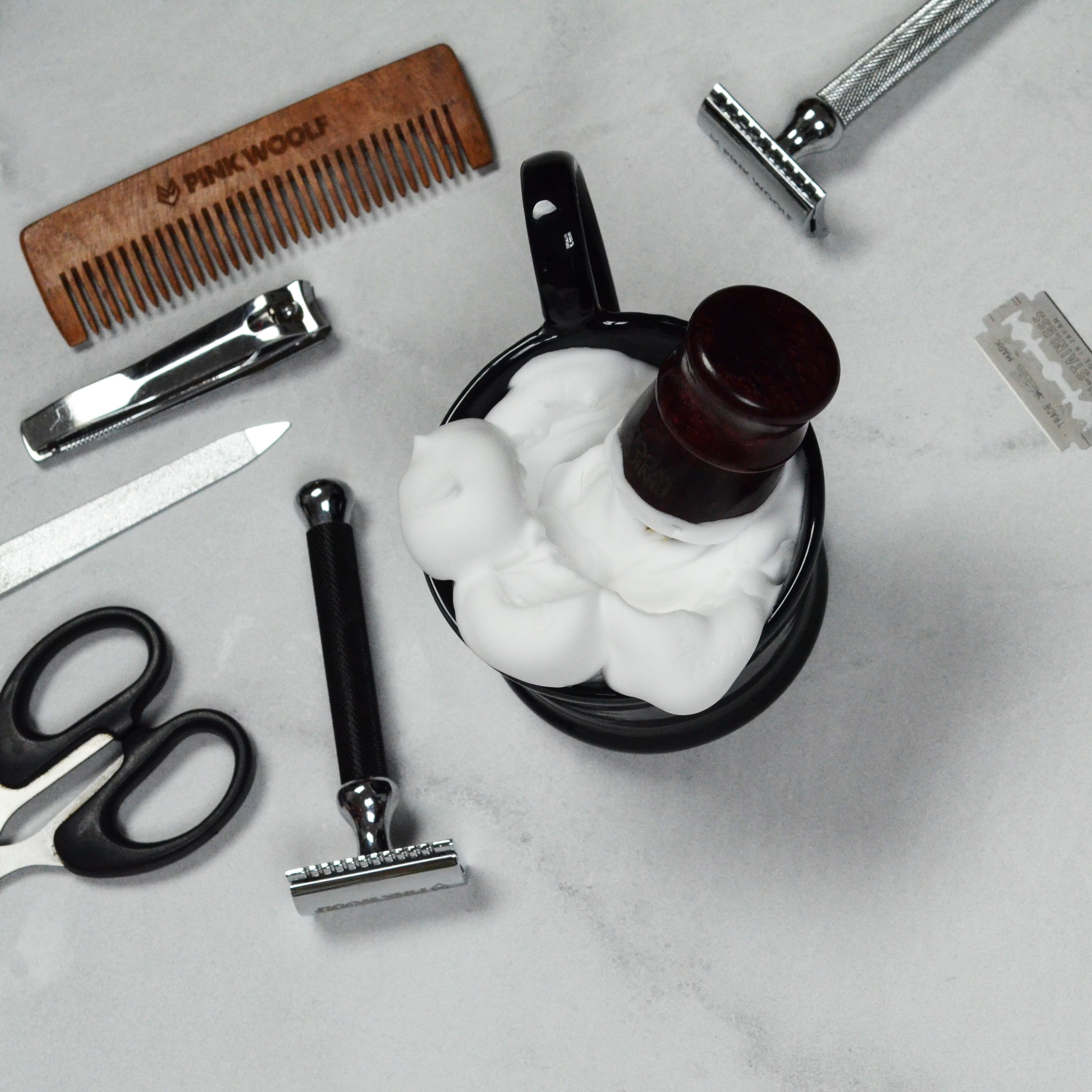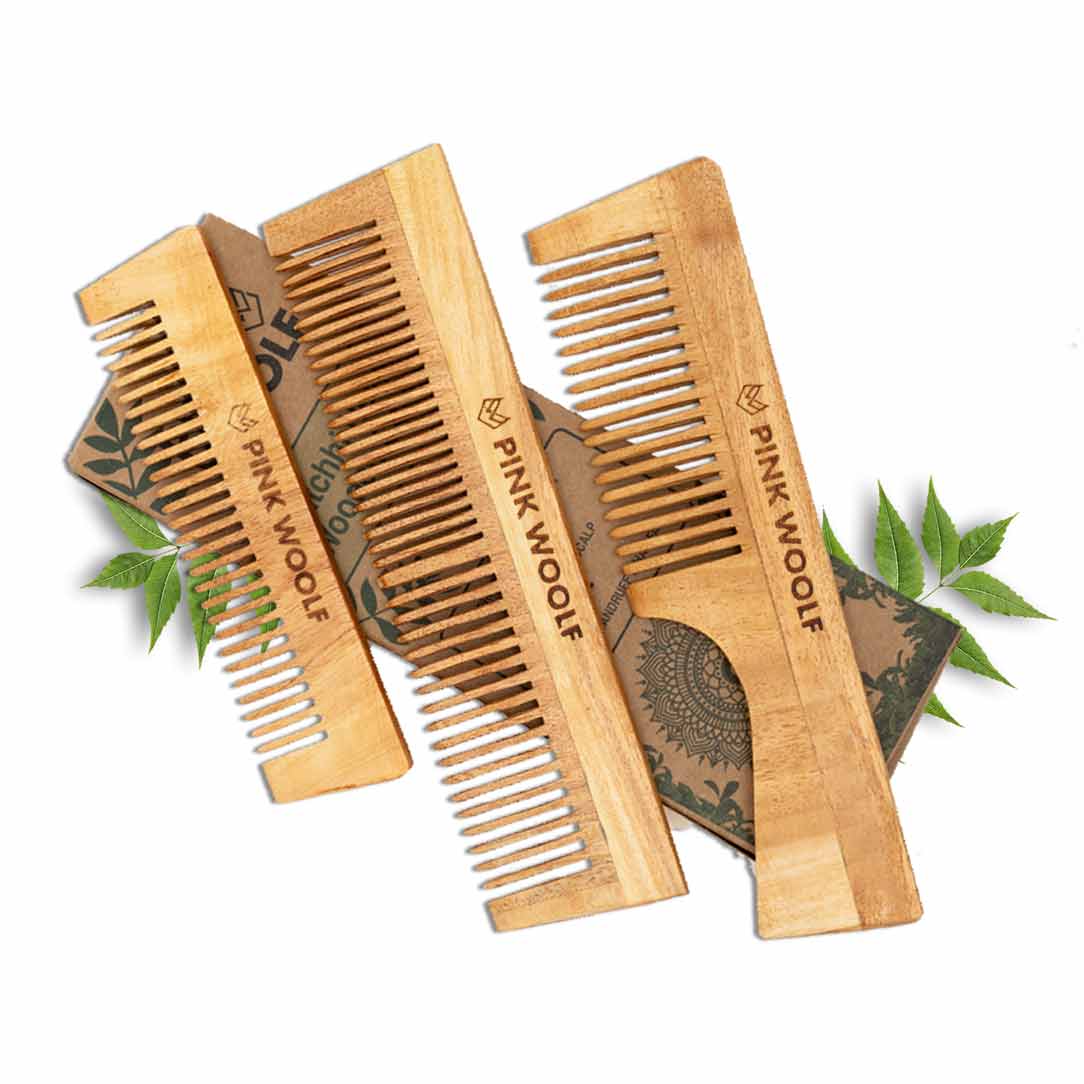Shaving cream has been a staple in grooming since 3000 BC, cherished for its myriad benefits. This article delves into the key advantages of using shaving cream, highlighting why it remains a favourite for many.
Ensures a Smooth, Close, and Gentle Shave
Shaving cream is thicker than soap, adhering well to the skin and providing a smooth shave through these benefits:
- Reduces Cuts: By moisturizing and softening the hair, it reduces the need for excessive pressure, lowering the risk of cuts.
- Minimizes Razor Burns: Acts as a protective barrier against the razor, preventing irritation caused by shaving dry skin.
- Softens Hair: Particularly beneficial for coarse hair, making it easier to cut with less effort.
- Raises Hair: Application causes hair to stand upright, facilitating a cleaner shave compared to hair pressed against the skin.
SAFETY RAZOR - CLOSED COMB (CC87) BLACK
Together, these benefits ensure a smooth, clean shave free from cuts, bumps, and irritations.
Nourishes the Skin
Beyond ensuring a smooth shave, shaving cream nourishes your skin and hair follicles. Many creams include nutrients that promote skin health and vitality, leaving your face moisturized and refreshed post-shave.
Delightful Fragrances
Shaving creams come in various pleasant fragrances, ensuring you smell great after every shave. A quick wipe and you’re ready to face the day with confidence.
LUXURY CUSHION ULTRA MOISTURIZING SHAVE CREAM
To maximize these benefits, it's essential to understand the cream's instructions and shave correctly. Choosing the right product, especially for sensitive skin or if you're new to shaving, is crucial.
Lather vs. Foam: Which Gives You the Best Shave?
This section outlines the benefits of using shaving soap or cream over canned foam. The purpose of lather, or any similar product, is to create a barrier between your skin and the razor to prevent irritation.
Proper lathering and a sharp blade are key to a smooth shave.
Why use Lather?
Well, it depends on your preference. Some use water, some use oil (like shaving oil), some use brushless products, some use canned foam, while others use shaving soaps or creams. The purpose of lather, or any similar product, is to create a barrier between your skin and the sharp razor blade to prevent irritation. These products provide a thin layer of lubrication that helps the razor glide smoothly over your skin. If your razor skips or doesn't glide smoothly, it usually comes down to two factors:
- Your lather isn't slick enough.
- Your blade isn't sharp enough.
These are common causes of a poor shave. Nonetheless, lather remains a crucial part of any wet shaving routine.
The Basics
Canned shaving products like cream, foam, and gel have been popular for years. They offer convenience, but traditional wet shaving products like soaps and creams have their own advantages, including environmental benefits and a nostalgic shaving experience.
Here is why canned shaving foams MUST BE AVOIDED at all costs-
Canned shaving foams, while seeming convenient, contain various chemicals to maintain pressure and ensure proper dispensing. Some of these chemicals are also inflammable. Here are some of the common ones:
Propellants
Propellants are used to dispense the foam from the can. They are typically gases that are compressed into liquids within the can.
- Butane: A hydrocarbon gas used as a propellant, which is highly flammable.
- Propane: Another hydrocarbon gas, similar to butane, and is also highly flammable.
- Isobutane: A branched-chain hydrocarbon used as a propellant, which is also flammable.
Solvents and Other Ingredients
These substances help in the consistency and stability of the foam.
- Isopentane: A solvent that is flammable and helps maintain the foam's consistency.
- Alcohol Denat. (Denatured Alcohol): Often used as a solvent or antibacterial agent, it is also flammable.
- Stearic Acid: A fatty acid that helps to create a creamy lather and stabilize the foam.
- Triethanolamine: An emulsifier that helps to blend water and oils, ensuring the foam stays mixed.
Stabilizers and Foaming Agents
These chemicals help create and maintain the foam's structure.
- Sodium Lauryl Sulfate (SLS): A surfactant that helps to create lather but can be irritating to the skin.
- Polysorbates: Used as emulsifiers to keep the ingredients mixed properly.
- Sorbitol: Helps to stabilize the foam and retain moisture.
Preservatives
These ensure the product's shelf life by preventing microbial growth.
- Parabens (e.g., Methylparaben, Propylparaben): Common preservatives used in many personal care products.
- Phenoxyethanol: An alternative preservative that is used to protect against microbial contamination.
It's important to note that while these chemicals ensure the functionality and longevity of the product, they also come with considerations regarding skin sensitivity and environmental impact.
Why consider using something other than canned lather?
Canned lather is convenient, but traditional wet shaving products are also accessible with some effort. Using shaving soaps or creams reduces waste; think of the environmental impact of all those cans used annually. Shaving creams and soaps are often recyclable, which is better for the environment. Traditional methods offer a nostalgic experience and improve skin exfoliation with a brush. When buying canned lather next time, check the ingredients. Consider whether you're comfortable with the ingredients in canned lather versus those in shaving soaps or creams, which have fewer additives.
Conclusion
Lather is crucial for wet shaving to protect your skin. Whether you use straight razors or safety razors, try shaving soap or cream for a noticeable difference. Start with basic products and a starter shaving brush to elevate your shaving experience.
Feel free to check out our full range of products at The Pink Woolf which has been designed to elevate your shaving experience!













Leave a comment